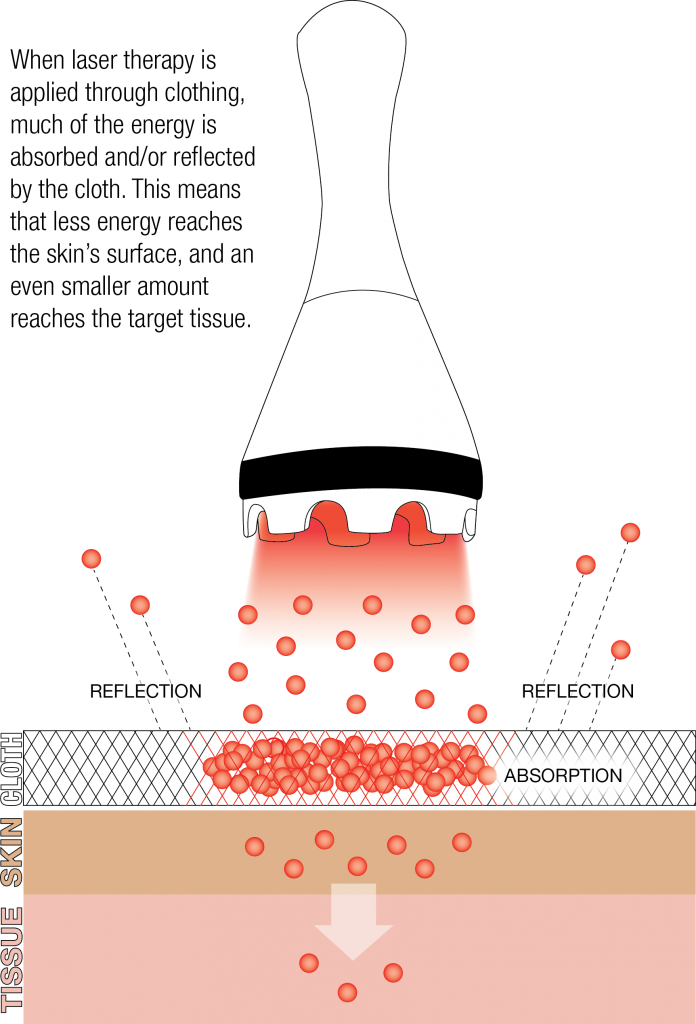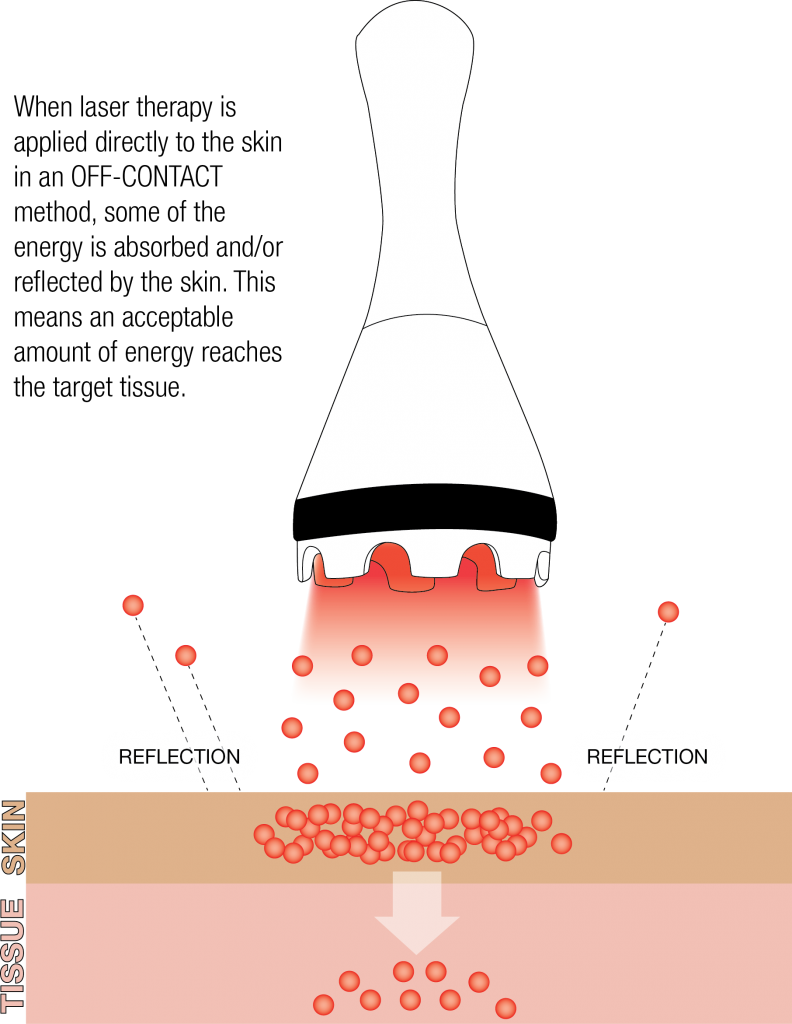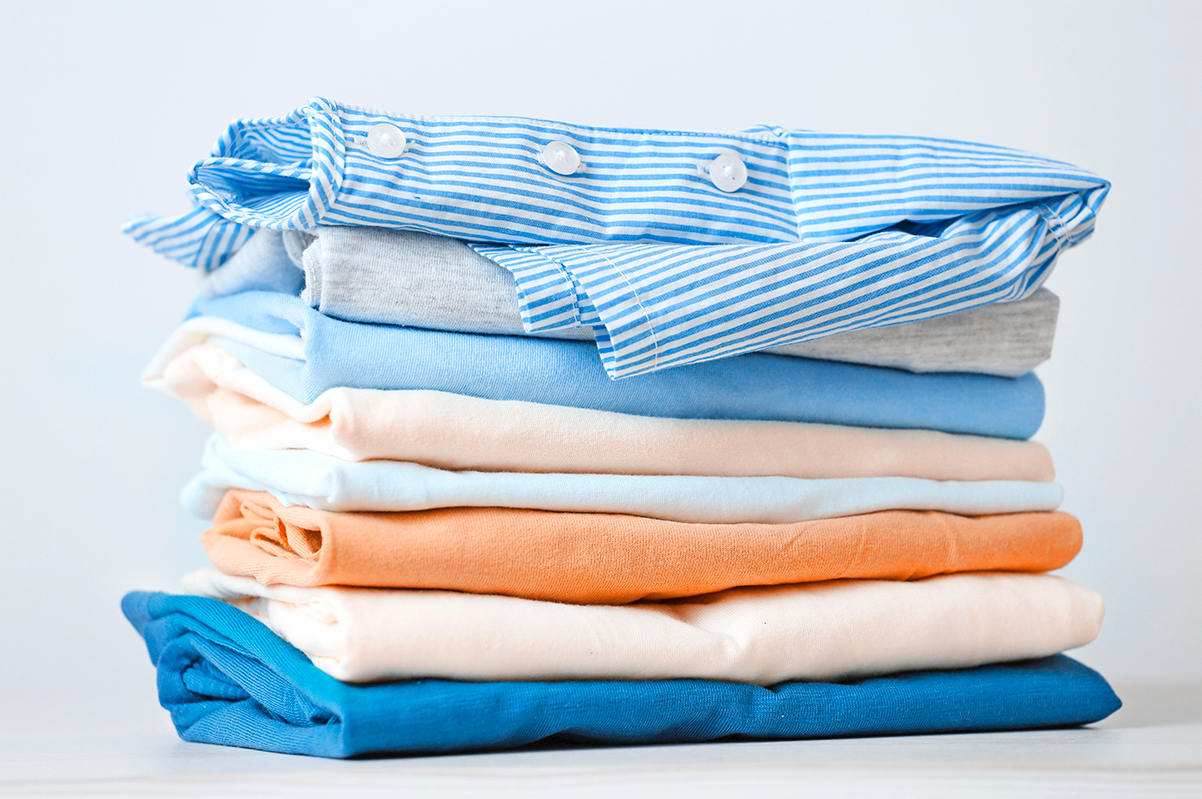The Naked Truth: Why Laser Therapy Shouldn’t Be Applied Through Clothing
Have you ever looked around on a beach and seen people wearing long-sleeved shirts? While this might not be the expected wardrobe option, especially on a hot day, it’s one that makes sense for people who want to limit their sun exposure. Even a lightweight fabric is remarkably efficient at keeping the sun’s energy from reaching your skin.
Sometimes, however, you may not want that extra layer of protection from light energy. When receiving laser therapy treatments, for instance, the best outcomes are achieved when the proper amount of energy is able to reach its target within the body. If there is a layer of clothing, a dressing, a bandage or a cast between the laser and the skin, much, if not all, of the energy is lost to the material before it can enter the body.
How lasers interact with clothing

Laser light can interact with surfaces in one of three ways: reflection, absorption, or transmission. Laser therapy works best when reflection off the skin’s surface is minimized, and absorption into the tissue maximized. By adding a layer of fabric, the laser light is not able to interact with the body in the same way. Depending on the color of the fabric, either a greater amount of reflection off the fabric, or absorption into the fabric, will take place. This means that less of the energy is reaching the skin’s surface, and even less is reaching its target within the body.
One way to visualize this concept is to picture a tightly woven chain link fence and someone holding a bucket full of ping-pong balls. The fence represents a layer of fabric, while the balls represent the photons (or energy). If you were to throw the ping-pong balls at the fence, some would bounce off, while some would get stuck in the fence itself, leaving far fewer to make it to the other side. Laser light behaves in much the same way when it comes in contact with fabric.
Why power loss matters
Why is this concept so important? Well, this loss of energy can have dramatic effects on treatment outcomes. Laser therapy treatment protocols rely on a certain amount of energy being distributed over a given area, so when less than the recommended amount of energy is delivered, results will be variable and often disappointing.
This layer loss effect is even more pronounced with lower-power lasers. Class III lasers, for example, emit a maximum of 0.5 W, while some Class IV lasers, like the LightForce EXP, can emit at powers up to 25 W. Let us say, for demonstration purposes, that a layer of fabriccauses a 75% power loss.

This means that a Class III laser emitting at 0.5 W is only delivering 125 mW to the skin’s surface when treating through clothing, while a Class IV laser emitting a 25 W is still delivering 6.25 W to the skin’s surface. Based on the therapeutic relevance of these different doses, there will be a much larger disparity between the expected and actual results for the Class III laser than the Class IV. However, neither scenario is advisable. To ensure adequate dosing, laser therapy needs to be applied directly to the skin, in either a contact, or non-contact manner.
Losing layers, improving outcomes
While clothing may be beneficial on a beach, it acts as an undesirable barrier during a laser therapy treatment session, preventing much of the laser energy from reaching its target. By stripping off the common misconception that it is acceptable to treat through clothing, dressings or any material, you will greatly improve outcomes by delivering more consistent and effective treatments.
To learn more about how fabric affects the delivery of laser therapy, watch the video below.


Comments